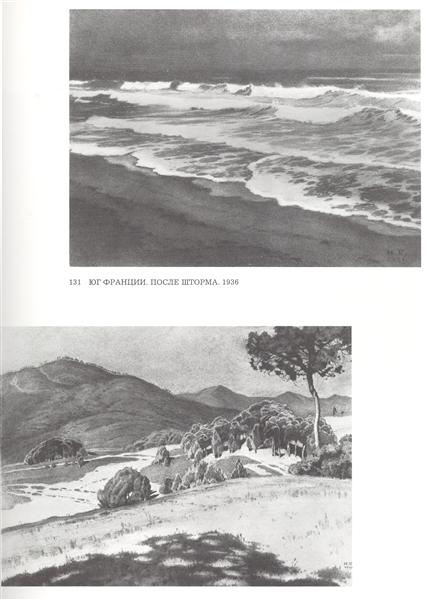Description
The work "South of France, after the storm" (1936) by Ivan Bilibin is an exquisite representation of a bucolic scene that contains the emotional depth and technical virtuosity of the renowned Russian artist. This painting It is part of the last stage of the author's trajectory, who is better known for his illustrations of fairy tales and Russian folk stories, dealing here with a theme with a more direct influence of the natural environment.
At first glance, painting places us in a peaceful landscape of southern France, immediately after a storm. The scene seems to have been chosen by Bilibin not only for its beauty, but also by the dramatic contrast between the natural elements that have been shaken by the storm and the quiet clarity that reigns after its passage. The contrast of soils soaked with the clouds that still dissipate in the sky, reflect an absolute domain over the light and the atmosphere.
The predominant colors are the ocher of the earth and the green and brown of the natural elements, presenting a coherent and sober chromatic palette. The houses of the composition, with their reddish roofs and simplified shapes, precisely capture the traditional architecture of the region. Each element of painting, From the most tiny details in the leaves and branches, to the varied texture of the soil, it has been prepared with a meticulous attention to detail that denotes both a deep appreciation by the landscape and a technical expertise that only refines through years of practice years and study.
The perspective used by bilibin is another point to highlight; The paint is built from a slightly high plane, allowing us to see an extensive portion of the landscape, as a spectator who contemplates the scene from a nearby hill. There are no visible human figures in this scene, which accentuates serenity and dominance of nature over the environment created by man. This could also be interpreted as a deliberate choice of the artist to express a moment of rest and meditation in a space free of the direct intervention of the human being.
Ivan Bilibin, born in 1876 in St. Petersburg, had a career marked by his ability to merge Russian stylistic tradition with contemporary influences, especially those of the European artistic scene of the twentieth century. His ability to illustrate precisely and capture the essence of Russian mythology and folklore made him gain great recognition. However, in "southern France, after the storm", Bilibin demonstrates its adaptability and its willingness to explore and capture new landscape realities, moving away from the narrative and entering into pictorial realism.
He painting It reflects not only a different stage in the artist's life, but also an acute sensitivity towards the natural environment. Emotions evoked by the landscape, the composition of the elements and the choice of an atmosphere after a storm, suggest a meditation on natural cycles and the calm that follows agitation, a topic as relevant in art as in life same
This oil on canvas, although less known than other bilibin works, is a tangible proof of the artist's versatility and his ability to capture beauty and emotion in seemingly ordinary details, thus contributing to the vast and diverse artistic legacy that he has left us.
KUADROS ©, a famous paint on your wall.
Hand-made oil painting reproductions, with the quality of professional artists and the distinctive seal of KUADROS ©.
Art reproduction service with satisfaction guarantee. If you are not completely satisfied with the replica of your painting, we refund your money 100%.

